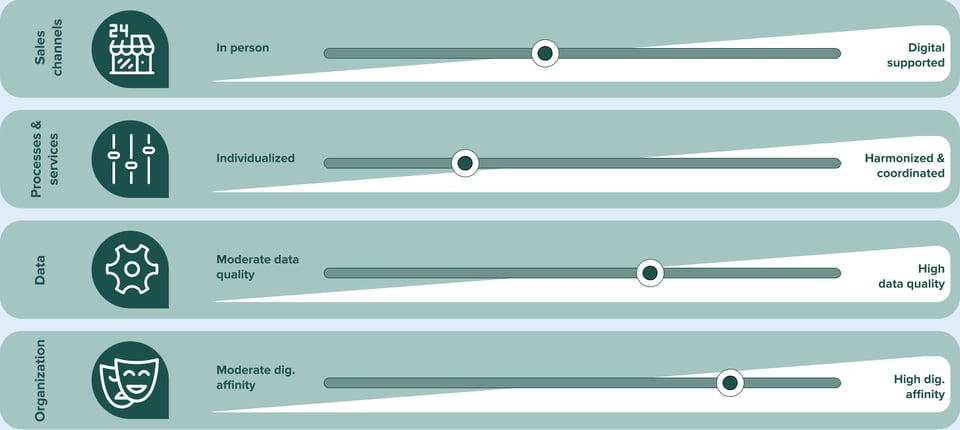What about your digital skills?
from Michael Pertek at
You don't know?
Digital transformation is a big challenge for many companies. It is difficult to deal with. Achieving concrete and meaningful results is often a nearly impossible task. There are a number of reasons why companies find it so difficult to design and implement digital transformation.
Determining the current maturity and digital skills of your organization and employees is a critical first step in digital transformation.

It is important to identify and analyze the relevant and influential dimensions. How can this be achieved?
Digital maturity assessment: Joint development of a structured assessment of your organization's digital maturity level. This should include an assessment of your current digital skills, capacities, processes and technologies.
Employee survey and feedback: Ask your employees - after all, they know best. The results will help you understand the current state of capabilities, digital technologies, their readiness for digital transformation, and their opinions on current digital processes. This can take the form of surveys, focus groups or interviews.
Skills matrix: Create a skills matrix to assess your employees' digital skills and competencies. Identify areas where your employees are strong and areas where they need support or training.
Comparison, classification and benchmarking: Use benchmark data from other companies in your industry or related industries to better assess your own level of digital maturity. This will help you understand how you compare to your peers and what actions you need to take to keep pace or be seen as truly innovative.
Data analysis: Leverage and analyze data to track the progress of your digital transformation projects and measure the impact on your business.
Once you have a clear picture of the current state of your organization and your employees, you can assess, develop, and most importantly, take action to increase your digital maturity:
Skill gap analysis: Identify the biggest gaps in your employees' digital skills and develop targeted training and development programs to close those gaps and strengthen their digital skills.
Leadership and culture: Establish or strengthen a leadership and culture that supports digital transformation. Leaders should serve as pioneers and role models, and foster a culture of continuous improvement and learning.
Resource allocation: Allocate resources to implement your digital transformation projects according to identified priorities - always in close coordination with your day-to-day operations and other strategic initiatives - and bring in outside expertise and capacity as needed.
Monitoring and adaptation: Monitor progress regularly and adjust your strategy based on the results and feedback.
The exact approach may vary depending on your organization's specific needs and challenges. The most important thing is that you understand the digital maturity of your organization and your people, continually assess it, and actively strive to improve it to keep pace with the ever-changing digital demands. We are here to help.
Based on the experience of a large number of projects, we have developed a methodical approach to measure and analyze the maturity level of organizations in a sound, fast and efficient way. We would be happy to present our methods, experiences and results to you.
